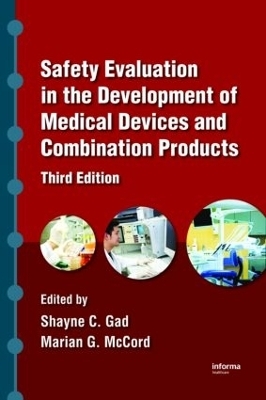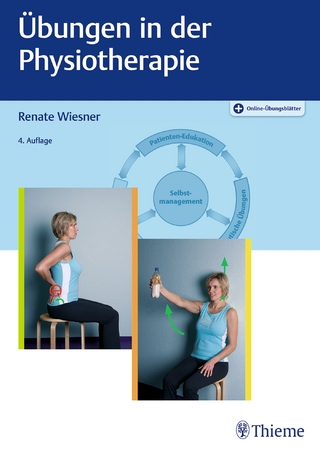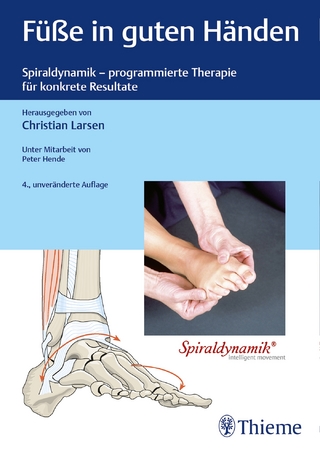
Safety Evaluation in the Development of Medical Devices and Combination Products
Crc Press Inc (Verlag)
978-1-4200-7164-1 (ISBN)
Capturing the growth of the global medical device market in recent years, this practical new guide is essential for all who are responsible for ensuring safety in the use and manufacture of medical devices. It has been extensively updated to reflect significant advances, incorporating combination products and helpful case examples of current real-life problems in the field.
The Third Edition explores these key current trends:
global device markets
continually advancing technology
the increasing harmonization of device safety regulation worldwide
Each aspect of safety evaluation is considered in terms of International Standards Organization (ISO), US Food and Drug Administration (FDA), European Union (EU), and Japanese Ministry of Health and Welfare (MHW) perspectives. In addition, the book reflects the role of the continuing growth of technology in the incorporation of science, particularly in the areas of immunotoxicology and toxicokinetics.
SHAYNE C. GAD is the principal of Gad Consulting Services, Cary, North Carolina, USA. Gad Consulting Services is a 15-year-old consulting firm serving more than 350 clients (including 120 pharmaceutical companies in the US and 35 overseas). Dr. Gad received his B.S. in chemistry and biology from Whittier College, Whittier, California, and his Ph.D. in pharmacology and toxicology from the University of Texas at Austin, Austin, Texas, USA. He has published 39 books and more than 350 chapters, articles, and abstracts in the fields of toxicology, statistics, pharmacology, drug development, and safety assessment. Dr. Gad has more than 30 years of broad-based experience in toxicology, drug and device development, statistics, and risk assessment with specific expertise in neurotoxicology, in vitro methods, cardiovascular toxicology, inhalation toxicology, immunotoxicology, and genotoxicology. He was the past president of the American College of Toxicology and the Roundtable of Toxicology Consultants. Dr. Gad has consulted for the US Food and Drug Administration, Environmental Protection Agency, and the National Institutes of Health. MARIAN G. MCCORD is Associate Professor with appointments in the Department of Textile Engineering, Chemistry, and Science at North Carolina State University, Raleigh, NC, USA, the Joint UNC/NCSU Department of Biomedical Engineering in Raleigh and Chapel Hill, NC, USA, and an Adjunct Associate Professor of Medicine at the University of North Carolina at Chapel Hill. She serves as co-Director of the Atmospheric Plasma Laboratory at the College of Textiles at NCSU, and is a leader in development of Advanced Medical Technology at NCSU (www.ncsu.edu/amt). Dr. McCord received her M.S. in Bioengineering and Ph.D. in Textiles and Polymer Science from Clemson University, Clemson, South Carolina, USA. She has been active in several professional organizations, including the AAMI Protective Barriers Committee, ASTM F23, the Biomedical Engineering Society, the American Society for Engineering Education, and the Society for Biomaterials. Dr. McCord is the recipient of the 2007 Richard Felder Award for Outstanding Service in Teaching and Learning. She has been an invited lecturer and presenter at numerous consortia, meetings, and conferences, and has been a valued mentor and advisor for her students.
1. Introduction. I. Biocompatibility. II. Scope of Devices and the Medical Device Market. III. History. IV. Regulatory Considerations for NGO’s and Secondary Regulators. 2. Regulatory Aspects and Strategies in Medical Device and Biomaterials Safety Evaluation. I. Regulatory Basis. II. Toxicity Testing: Medical Devices. 3. Road Map to Test Selections. I. Key concepts. II. Conditions of use. III. Materials, components, and products. IV. Prior knowledge. V. Types and Uses of Tests. 4. Materials in Medical Device Design. I. Introduction. II. Metals. III. Ceramics. IV. Polymers. V. Nanomaterials. 5. What to Test: Sampling and Sample Preparation. I. Sampling. II. Randomization. III. Sample Preparation. IV. Reference Materials. V. Conclusion. 6. Cytotoxicity Testing. I. Background. II. Cytotoxicity assays. III. Conclusion. 7. Hematocompatibiity. I. Introduction. II. Standard tests. III. Interpretation. IV. Specific Concern. V. Conclusion. 8. Local Tissue Tolerance. I. Dermal irritation. II. Ocular irritation testing. III. Other Nonparenteral Route Irritation Tests. IV. Parenteral Irritation/Tolerance. V. Parental Routes. VI. Intracutaneous Irritation. VII. Pyrogenicity. VIII. Problems in Testing (and Their Resolutions). 9. Immunotoxicology. I. Overview of the Immune System. II. Evaluation of the Immune System. III. Local Lymph Node Assay. III. Approaches. IV. Problems and Future Directions. 10. Implantation Biology and Studies. I. USP implantation Test. II. ISO 10993 Implantation Test. III. Test Method for Implantation in Subcutaneous Tissue. IV. Test Method for Implantation in Muscle. V. Test Method for Implantation in Bone. VI. Controls Materials. VII. Long-term Implant Studies. VIII. Considerations. 11. Acute Systemic Testing. 12. Genotoxicity. I. DNA structure. II. Mutagenicity. III. Cytogenetics. IV. In Vitro Cytogenetic Assays. V. In Vivo Cytogenetic Assays. VI. Sister Chromatid Exchange Assays. 13. Subchronic and Chronic Toxicity and Reproductive and Developmental Toxicity. I. Objectives. II. Regulatory considerations. III. Parameters to measure. IV. Histopathology. V. Study Interpretation and Reporting. VI. Reproductive and Developmental Toxicity. 14. Carcinogenicity. I. Animal models. II. Dose Selection. III. Interpretation of Results. 15. Degradation Products and Impurties. I. Introduction. II. Metals. III. Ceramics & Glasses. IV. Polymers. V. Effects of Sterilization. VI. Heavy Metals. 16. Combination Products. I.Combination Products. II. Principal Mode of Action (PMOA). III. Testing to serve two or more Regulatory Masters. 17. Clinical Studies for Medical Devices. I. Design considerations. II. Epidemiology. III. Conclusion. 18. Special Studies. I. Cardiovascular Devices and Prostheses. II. Tampons. III. Contact Lenses and Their Solutions. IV. Thrombogenicity. V. Twenty-One-Day Eye Irritation Study in Rabbits. VI. Systemic Injection Test. VII. Production of Toxic Shock Syndrome Toxin-1 (TSST-1). VIII. In Vitro Evaluation of the Effects of Potential Tampon Materials on PH And Growth of Vaginal Microflora. IX. Inflammatory Response to Biomaterials. 19. Toxicokinetics 20. Case Histories and Problem Resolution I. DEHP in devices. II. Dalkon Shield. III. Talc on Gloves and Condoms. IV. Toxic Shock Syndrome. V. Latex Allergy. VI. Silicone in Devices. VII. Drug Coded Stents. VIII. Antimicrobial Catheter. IX. Problem Solving. X. Risk Assessments. XI. Conclusion.
| Erscheint lt. Verlag | 1.11.2008 |
|---|---|
| Zusatzinfo | 11 Tables, black and white; 5 Illustrations, black and white |
| Verlagsort | Bosa Roca |
| Sprache | englisch |
| Maße | 210 x 280 mm |
| Gewicht | 907 g |
| Themenwelt | Schulbuch / Wörterbuch |
| Medizin / Pharmazie ► Physiotherapie / Ergotherapie ► Orthopädie | |
| Naturwissenschaften ► Biologie ► Biochemie | |
| Technik ► Medizintechnik | |
| Technik ► Umwelttechnik / Biotechnologie | |
| ISBN-10 | 1-4200-7164-5 / 1420071645 |
| ISBN-13 | 978-1-4200-7164-1 / 9781420071641 |
| Zustand | Neuware |
| Informationen gemäß Produktsicherheitsverordnung (GPSR) | |
| Haben Sie eine Frage zum Produkt? |
aus dem Bereich


